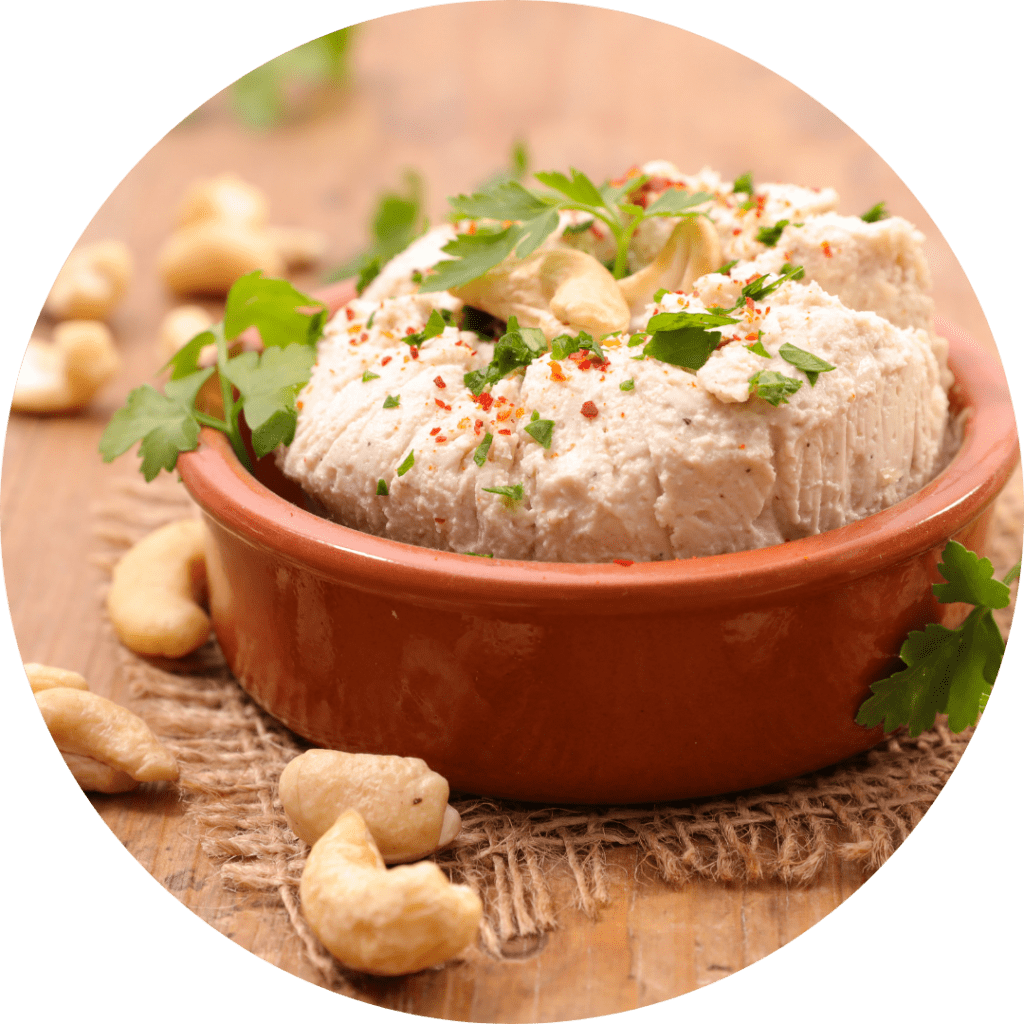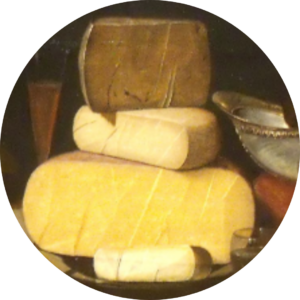Why Cashew Cheese is Not Really Cheese (But That’s OK)
Ah, cashew cheese. Darling of the dairy-free, vegan, and lactose-intolerant crowd. And I really like cashews. It spreads, it melts (maybe), and it even allegedly pairs nicely with a glass of wine—though you might have to go for something a bit more off the beaten path. But let’s get one thing straight: cashew cheese is not, and never will be, actual cheese. If your answer to that is I don’t care, I agree with you. I don’t think Cashew Cheese wants to identify as cheese anyway.
However, The Vegan Society when talking about EU Legislation is painting this as unfair:
“European Union law already limits how the plant-based, dairy alternative food manufacturing sector can label its products. The words ‘milk’, ‘cream’, ‘butter’, ‘cheese’ and ‘yoghurt’ can’t be used on labels because the dairy industry wants to protect its dominance, and make alternative plant-based products difficult to market and sell. The law that restricts the plant-based sector from using these words goes back some decades.” Check it out here…
It goes on:
“With regard to alternative milk products, in addition to not being able to use the words ‘milk’, ‘cream’, ‘cheese’ etc. to describe food products, manufactures will also be prohibited from using words such as ‘style’, ‘type’, ‘imitation’, ‘alternative to’, ‘to be used as’, ‘flavour’, ‘substitute’, ‘like’, or any other similar word that helps the manufacturer explain to the consumer what type of replacement product the food item in question is.”

Cashew Cheese, Hazelnut Butter, Cheddar Style Shreds, Fishless Fillets, Creamery Vegan Butter. Even Smart Bacon. (Smart Bacon?) With the rise of veganism and all its environmental benefits puffy faced marketeers have begged, borrowed and stolen terms from the animal consuming world to tempt people over the line.
As the Vegan Society is picking up, the challenge is there’s a bunch of legacy rules and regulations designed to protect the consumer from buying duff products where the manufacturer has cut content to cut costs. Cheese has a definition that pre-dates the current vegan-storm to make sure we are not ripped off. The vegan-marketeers run into this brick wall when luring well meaning consumer towards a vegan substitute.
So this isn’t about ingredients, or even names, its about laws to control misleading use of common terms. This is what the EU figure cheese ought to be:
- Milk needs to be involved
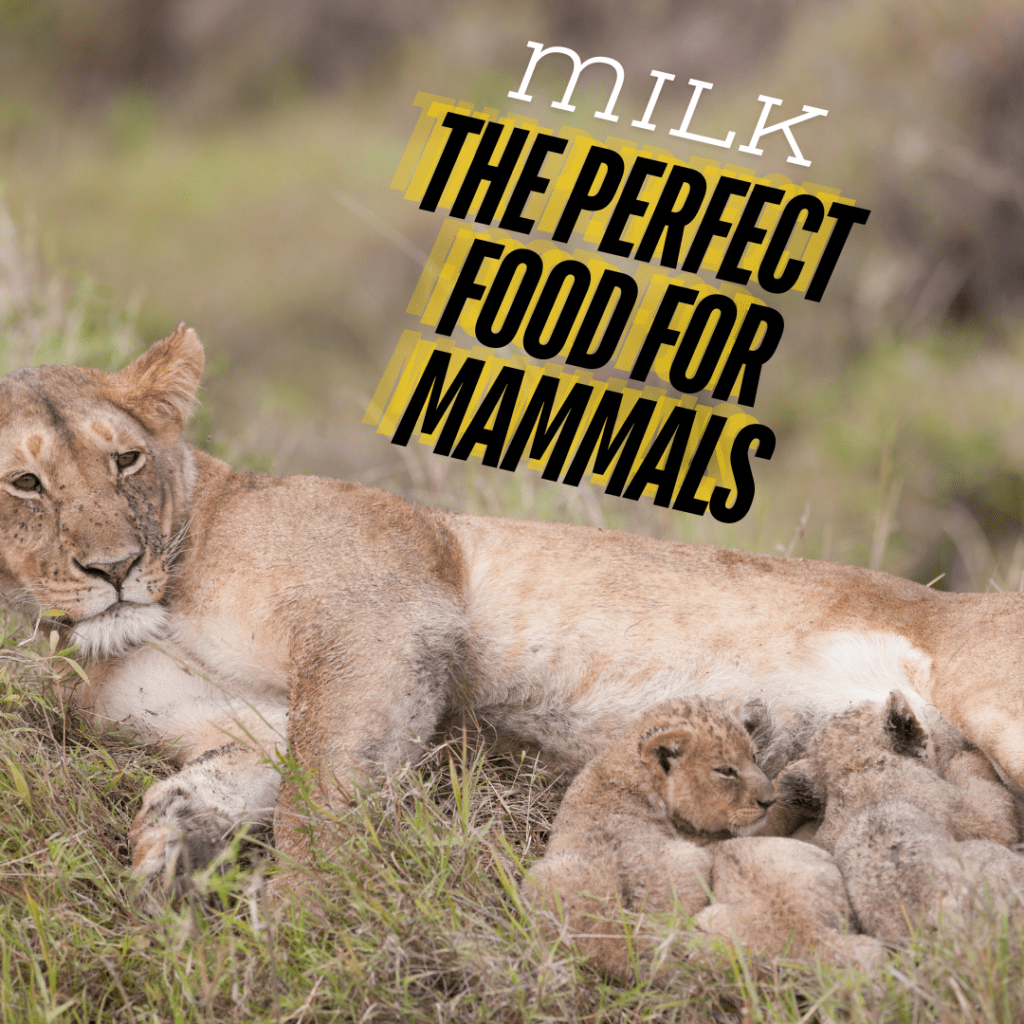
Let’s start with the obvious. Traditional cheese is made from milk—whether it’s from cows, goats, sheep, or even buffalo.
Milk is the fundamental food for mammals and the fundamental ingredient in cheese-making, involving a process that dates back thousands of years. Cashew cheese, on the other hand, doesn’t have a single drop of milk in it. Not even a teaspoon of skim milk. Nada.
That’s kinda the point, and it kinda misses the point at the same time.
Instead, it’s made from cashews, which are nuts. Which is nuts. “C’est impossible!”. Without milk, you’ve got no curds, and without curds, you’ve got… well, a tasty nut paste.
- There’s No Coagulation, and That’s Key
Cheese gets its distinctive character from coagulating milk. There are a few ways to do this, but enzymes or bacteria are the go-to microbiology.
TBH I’m not sure of the vegan position on bacteria and whether they (being alive) are allowed to be sacrificed in the name of human nutrition, but are not alive enzymes can definitely be laboratory produced. The problem is they don’t coagulate nuts, and there is no equivalent process.
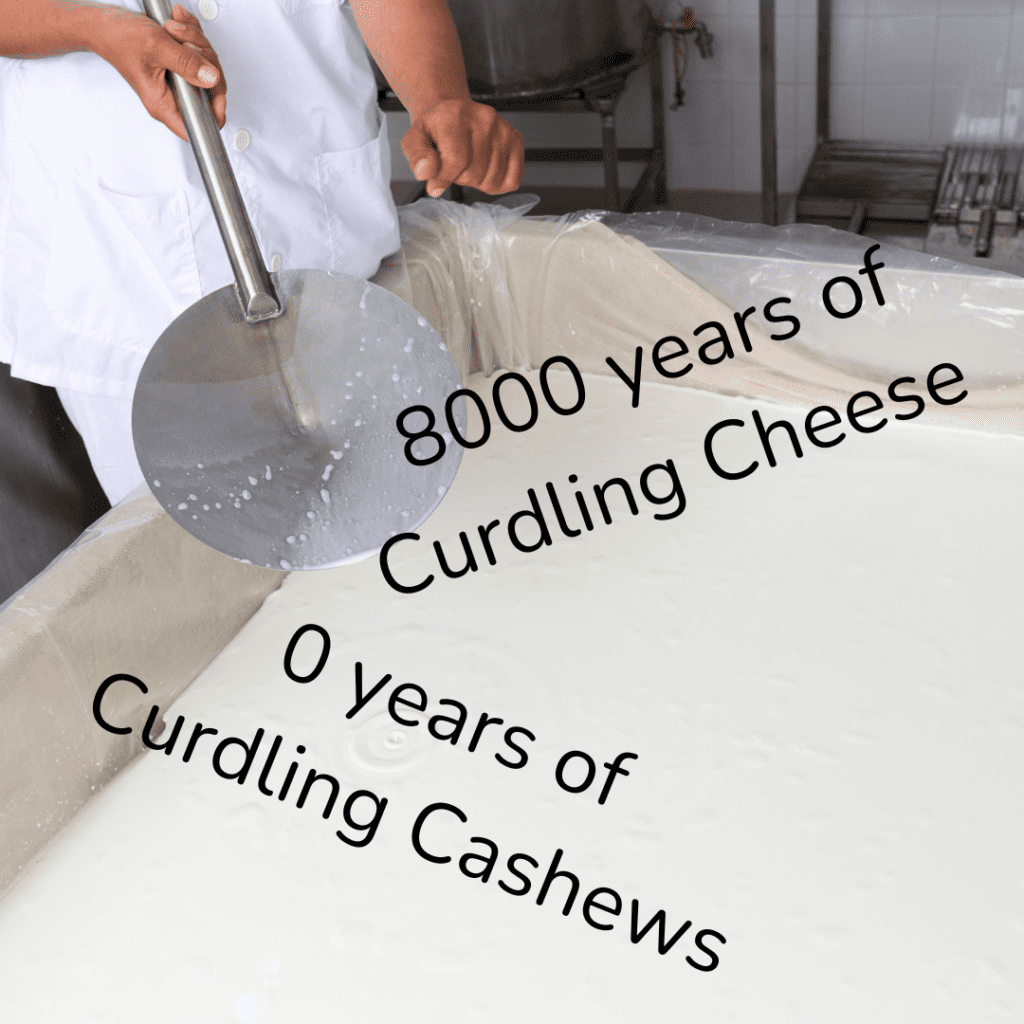
You may say I’m being pedantic, but the coagulants we in cheeseland called SLAB, or Starter Lactic Acid Bacteria, and Rennet, the enzymes that deliver coagulation, create taste and flavour by metabolising the natural sugars, fats, proteins, lactates and citrates that define cheese in the palate. Coagulants are more than simply organic texture builders. These coagulants are master chefs. No microrganics, no cheese flavours.
Nut cheeses on the other hand, are pastes. They are literally magi-mixed into a cheese like format. It hasn’t done the time to deserve the name. Its like a shot putter saying she’s a sprinter. Yes, both athletes, no not the same sport. Get off my starting line.
And before you say “but we ferment out cashews“, you will also ferment to make sourdough, or beer. They aren’t cheeses. Every ferment is different. Fermentation is not some Harry Potter magic spell that can turn cats into owls.
- No Aging Gracefully
Can cashew cheese be ripened with moulds like brie or stilton or aged like cheddar.
No.
“Cheese has infinite possibilities. Cashew cheese does not.“
This isn’t a slam dunk reposte, but it’s a good example of how the intrinsic nature of cheese and nut non-cheeses is different. Will technologist of the future find moulds that will? Probably.
Anything else?
While I’m still on my soap box lets add a couple more reasons why Cashew “Cheese” needs to stay in its lane.
- It’s a Spread. It doesn’t cook
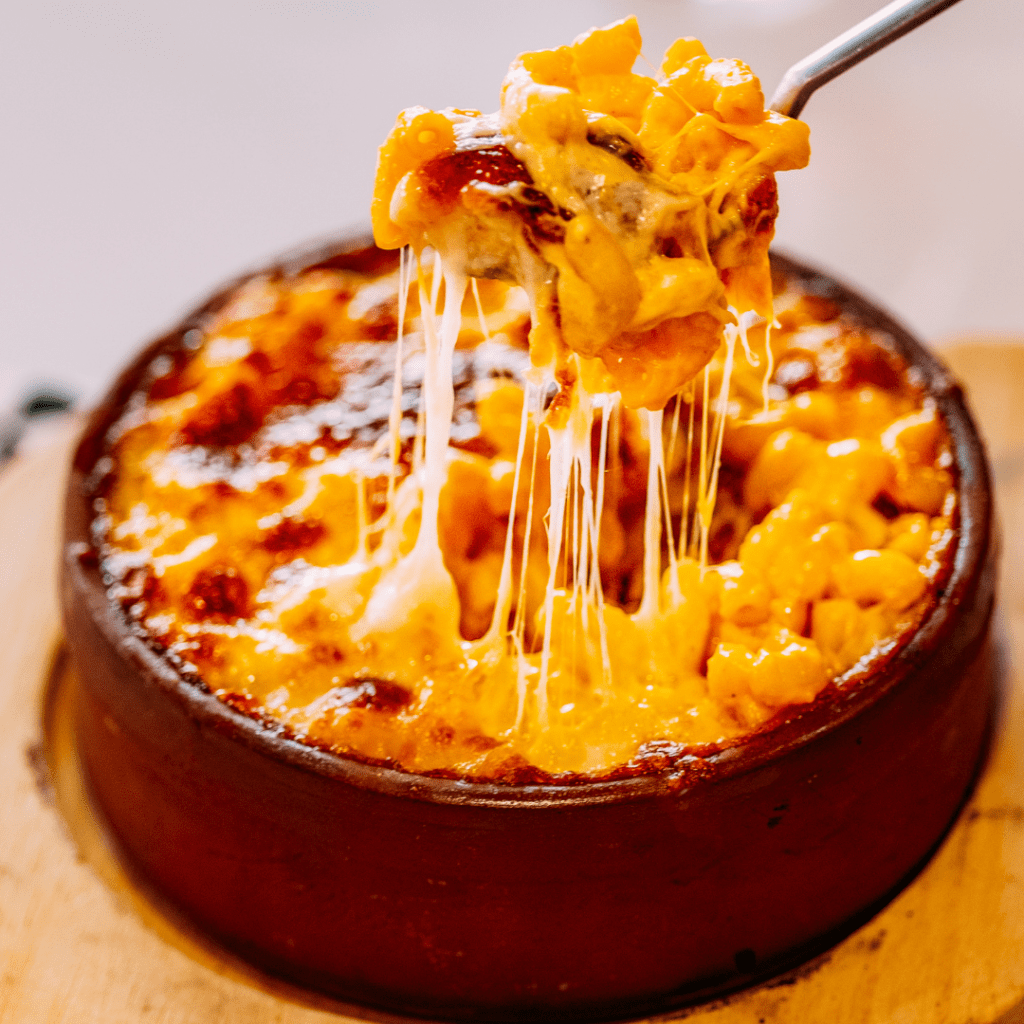
Think of all those textural characteristics of cheese you love when cooked – the bubbling welsh rarebits, the stringy mozzarella, the bathable fondue, the grilled goats cheese. While all cheese’s are different, they all love to be cooked. Can a cashew cheese deliver on any of these?
Not so much. It’s more of a spread or a dip, like hummus’s unexpected cousin in from out of town. While some industrious folks have figured out how to make it sliceable, it’s never going to have that smell, that ooze, that unctuousness the kitchen can promise from cheese.
- Health benefits
Cheese is made from the perfect substance – milk – literally 100% of that a baby needs in the first few months of life to build an entire body. Cheese looses the lactose and water in the making of this movie, but otherwise it’s intact- proteins, fats, vitamins, minerals, bacteria. Cashews, for all their goodness, can’t match that.
You would need 2.3kgs of cashews to get the same calcium as a ¼ pound of cheddar.
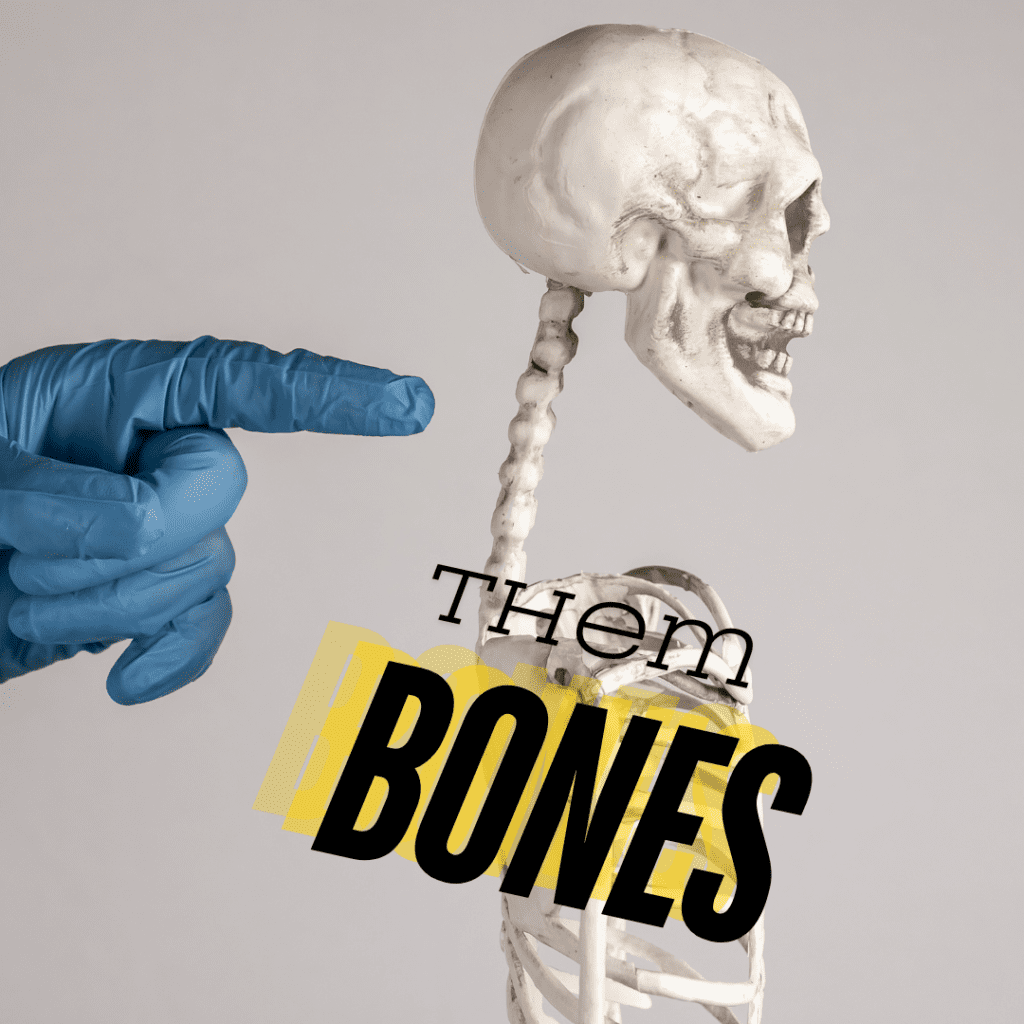
6. Many non-cheese cheeses are Ultra-processed foods!
Example: Shamembert ingredeints
Water, Shea butter, Rice bran oil, Starch (Tapioca, Potato), Modified potato starch, Miso (SOY), Vegetable protein (faba bean, pea, potato), Nutrional Yeast, Salt, Carrageenan, Natural Flavourings, Lactic Acid, Cultures.
Go into a shop and look at an non-cheese cheese, then check out the ingredients.
To make these little gems you need quite a lot of processing, these are Ultra Processed Foods. Don’t be fooled by the nice sounding words like faba bean.
These are mechanically extracted commodity ingredients that modern diets are saturated with to make cheap foods incomparable with healthy living flavored up and made addictive with chemicals.
This is not what I believe most vegans sign up for when they move away from meat and dairy.
There are trillions of good recipes with nuts in. The supposedly cheesey end doesn’t justify the ultra-processed means for a bit of supermarket shelf mock-equivalency.
Don’t do it!
Conclusion: Not the same. Different.
In the end, cashew cheese is a delightful, nutritious, and versatile option for those who avoid dairy, but it’s not cheese. I don’t even think of it as a cheese substitute. Labeling it cheese makes it an impostor, a non-cheese masquerading as the real deal.

But hey, that doesn’t mean you shouldn’t spread it on a cracker, pair it with a good wine, and enjoy it for what it is: a tasty treat in its own right.
It is its own person.
Just don’t expect it to satisfy your craving for a sharp, savoury aged cheddar or to blend it with avocado, tomato and balsamic vinegar and make your dream of Florence.
In the European Union (EU), the definition of “cheese” is regulated under EU law, specifically within the framework of dairy product standards. According to the EU regulations, cheese is defined as a product obtained by coagulating milk, cream, skimmed or partially skimmed milk, buttermilk, or a combination of these, by the action of rennet or other suitable coagulating agents, and by partly draining the resulting whey.
Key Points of the EU Definition of Cheese:
- Base Ingredients: Cheese must be made from milk or milk-derived products (such as cream or buttermilk).
- Coagulation Process: The process involves coagulating the milk using rennet (an enzyme) or other suitable agents to form curds.
- Whey Removal: The curds are then separated from the whey, and the remaining curds are processed into cheese.
Additional Requirements:
- Labelling and Protection: There are additional protections and labelling requirements under EU law for specific types of cheese, especially those with Protected Designation of Origin (PDO) or Protected Geographical Indication (PGI). These labels ensure that the cheese meets specific standards related to its production region, method, and ingredients.
- Additives and Preservatives: Certain additives and preservatives are regulated, and the use of these must be declared on the packaging to ensure consumers are informed about the contents of the cheese.
These definitions and regulations help maintain the integrity of cheese as a product and protect consumers from misleading information regarding what constitutes cheese under EU law
To determine how many cashews you would need to eat to get the same amount of calcium as in a 1/4 pound (4 ounces) of cheddar cheese, let’s break down the numbers.
Calcium Content Comparison:
- Cheddar Cheese: A 1/4 pound (4 ounces or about 113 grams) of cheddar cheese contains approximately 800 milligrams of calcium.
- Cashews: Cashews provide about 10 milligrams of calcium per ounce (28 grams).
Calculation:
To get the same 800 milligrams of calcium from cashews:
- 800 mg (from cheddar) / 10 mg (from cashews per ounce) = 80 ounces of cashews.
Conversion:
- 80 ounces of cashews is equivalent to 5 pounds (since there are 16 ounces in a pound).
Conclusion:
You would need to eat approximately 5 pounds (about 2.27 kilograms)of cashews to get the same amount of calcium as in 1/4 pound of cheddar cheese.
This shows that while cashews do contain calcium, they are not a particularly rich source of it compared to dairy products like cheddar cheese.

